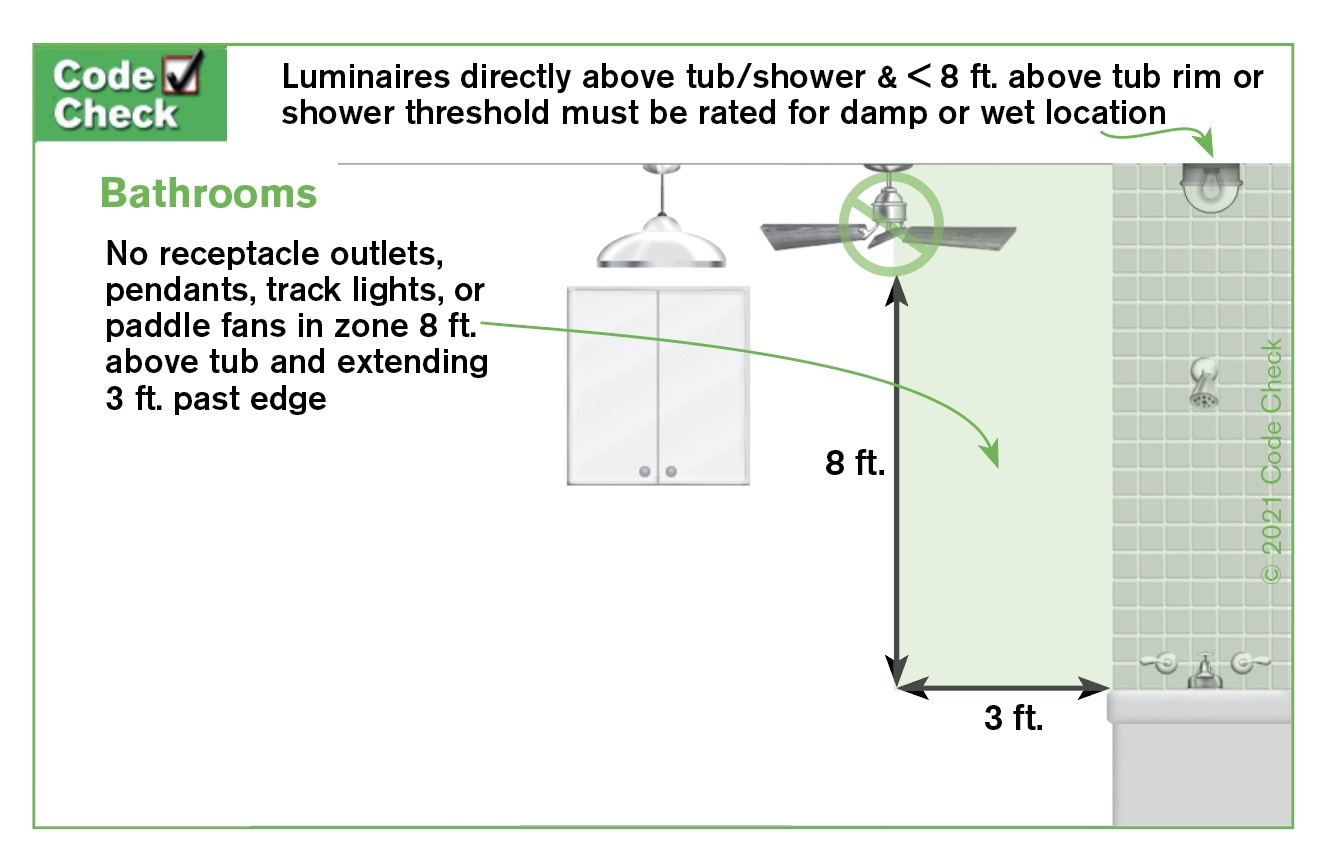When it comes to bathroom electrical safety, no detail should be overlooked. The National Electrical Code (NEC) Section 406.9(C) sets clear and important boundaries for the placement of electrical receptacles in and around bathtub and shower spaces to reduce the risk of electric shock in areas prone to high moisture and direct water exposure.
What Does NEC 406.9(C) Require?
Here is the specific language from the code:
406.9(C) Bathtub and Shower Space.
Receptacles shall not be installed within a zone measured 900 mm (3 feet) horizontally and 2.5 m (8 feet) vertically from the top of the bathtub rim or shower stall threshold. The identified zone is all-encompassing and includes the space directly over the tub or shower stall.
What This Means in Practice
No receptacles are allowed within the defined 3-foot by 8-foot zone surrounding a bathtub or shower.
The zone includes not just the side walls, but also the area directly above the tub or shower space.
This applies regardless of whether the receptacle is GFCI-protected or weather-resistant—it simply cannot be placed within the prohibited zone.
Why It Matters
Bathrooms are among the most dangerous areas in terms of electrical safety due to the presence of water, steam, and the likelihood of direct human contact with electrical devices. The goal of NEC 406.9(C) is to:
Prevent accidental contact between electrical devices and water.
Protect individuals from the risk of electrical shock when using appliances near bathing areas.
Ensure code-compliant installations that pass inspection and meet national safety standards.
Design Implications and Best Practices
During bathroom design or renovation, always plan receptacle locations outside the 3 ft x 8 ft zone from the tub or shower.
For convenience, place receptacles where they are accessible but well outside the prohibited zone—typically near the vanity or entryway.
Ensure that all other bathroom receptacles are GFCI protected as required by NEC 210.8(A)(1).
Final Thoughts
NEC 406.9(C) serves a critical role in ensuring electrical safety in bathrooms. Whether you’re a homeowner, contractor, or designer, it’s essential to understand and follow this rule to avoid costly corrections, failed inspections, and, most importantly, to protect lives.



